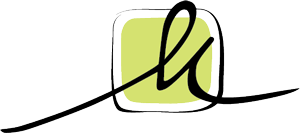 In Monday’s tutorial I mislabeled Fuchsia. On the right side of the chart I called it Magenta. Thank you to Judy Reese in Washington for raising her virtual hand to ask the obvious question. Where do I find Premo Magenta? Ah. There is no such thing as Premo Magenta – just lots of confusion because I used the words Fuchsia and Magenta interchangeably.
In Monday’s tutorial I mislabeled Fuchsia. On the right side of the chart I called it Magenta. Thank you to Judy Reese in Washington for raising her virtual hand to ask the obvious question. Where do I find Premo Magenta? Ah. There is no such thing as Premo Magenta – just lots of confusion because I used the words Fuchsia and Magenta interchangeably.
This is not wrong. They are the same color. The naming history is interesting.
From a children’s storybook called “Naming Colors” by Ariane Dewey –
“The town of Magenta is in northern Italy. A very bloody battle was fought there in 1859 between the French, thier Italian allies, and the Austrians. Some French chemists had just invented a red dye. When they heard of France and Italy’s victory, they decided to name the dye Magenta after the battle.”
Before the battle the new synthetic color was called fuchsin from the flower named after the German 16th century botanist, Otto Fuchs.
Somewhere I’ve read that the earlier name, Fuchsia, was adopted by the Germans who did not want a color named after a French victory.
So Magenta is the French name and Fuchsia the German name for the same color.
The Wikapedia sites for Fuchsia and Magenta go into lots (and lots) more detail.
The main thing to remember – whether it is called Fuchsia or Magenta – it is the color that is the process primary. And its complement is . . . spectrum Green.


September 21, 2015 at 4:20 pm
Hi Christine –
To answer your questions:
1. Cyan and Turquoise are not exactly the same color. Turquoise is close to the cyan that is the secondary color of mixing blue and green in LIGHT – this light cyan leans toward yellow. The Cobalt in Premo is closer to the primary color of cyan used in printing. This printing cyan leans toward blue and is a better color to use as the primary in mixing paints, polymer, and dyes. Some of the polymer manufacturers have a Turquoise that is called the primary but it will not mix the same as the primary cyan. Tip: Look at the colors of printing inks to see what the primaries magenta,cyan and yellow should look like for best mixing results.
2.Fuchsia and Magenta are the same color by different names. There is no way to make a magenta. It is the primary for mixing with paint, polymer, dyes etc. You can make red from magenta by adding yellow but you can’t make a magenta from a red.
3. Basically, you cannot make the magenta that is the primary color – sorry! The color called Fuchsia by Premo is a good magenta. It is still available in the stores.
Have fun experimenting!
September 21, 2015 at 3:42 pm
I’m trying so hard to understand from your book the lessons about Properties of Color. I have questions. I use Premo! clays
1. If Fuchsia is the same as Magenta does that mean that Turquoise the same as Cyan?
2. Are red and purple supposed to make magenta. When I mixed Cadmium Red and Purple, I got a color that looked like maroon. Again, I’m using Premo!
The same happened when I mixed Pomegranate and Purple–just a different shade of maroon.
3. What colors can I mix to make magenta if I don’t have any Fuchsia?
Warning
October 3, 2010 at 2:48 am
Hi Maggie,
I really love the book that you and Lindly made. Today I wanted to make the Color-Scale triangle (page 72). I am not sure wich Premo colors to use for the baseline colors, the mix from Blue to Magenta. I always used Fuchsia and Cobalt blue for mixing, but Lindly’s Yellow to Fuchsia colormix in the book (Lindly’s triangle on page 74) looks more red/pinkisch than mine. Can you please let me know if I need to mix the Fuchsia or maybe use a different color for the Magenta in the Color-Scale exercise